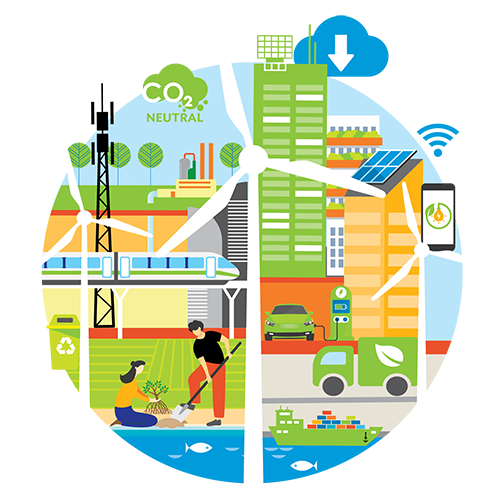
This article is published in collaboration with Mastercard.
Technology is fast changing how we view education and learning. The use of shared, 3D virtual spaces—collectively known as the metaverse—is allowing educators to deliver more immersive and accessible learning experiences, which is extending the boundaries of a traditional classroom.
While online learning has been with us for some years now, it has not ventured too far from traditional classroom-based teaching. In other words, the teaching platform may have changed, but the core teaching method has, by and large, stayed the same.
Learning in the metaverse, however, is taking things to an entirely new level.
For instance, the Aventis Graduate School in Singapore aims to become world’s first graduate school in the metaverse. The college says its vision is to provide "innovative and immersive learning experiences that prepare individuals for the evolving demands of the digital era," while also enabling students to reach their full potential through accessible, affordable, and quality education.
Similarly, the Pohang University of Science and Technology in the Republic of Korea says it is planning to become a "Metaversity," where students can access training courses from virtual classrooms in the metaverse.
In Japan, the N and S High Schools, the country’s largest private school chains, have also introduced a program that uses virtual reality (VR) that allows students to enhance their studies from home. The school says that as many as 7,000 students are already learning in the metaverse.
The benefits of learning in the metaverse
These examples, however, are merely the tip of the iceberg in terms of what is possible. It is after all still early days for the technology.
We all witnessed the metaverse exploding into the mainstream toward the end of 2021, and almost overnight, there was a shift in thinking around how it would radically transform how we work, learn, play, socialize, and shop. Inevitably, the hype soon died down, but the fundamental technological advances that fueled the initial excitement remain.
Key to fulfilling the potential of the metaverse will be how this technology is applied to solve real-world problems. In education, this is about delivering lasting and meaningful benefits to students worldwide. Currently, I see three immediate benefits that stand out.
First, access to education. Inclusion is a topic we talk about a lot at Mastercard. We believe financial and digital inclusion has the power to change lives and power economic growth. Educational inclusion is no different. If we want to tackle inequality and marginalization, we must ensure that all communities have equal access to learning.
The metaverse has the potential to drive this agenda by offering a decentralized learning model that is not dependent on a particular location or time. Greater access to teachers and to educational resources through the metaverse would be a transformational change, in particular opening up learning opportunities for economically underprivileged and geographically isolated communities.
Second, the potential of a richer learning experience. The integration of metaverse technologies, such as virtual reality (VR), augmented reality, and artificial intelligence, into classroom learning would help provide a more enriched learning experience. Research has shown that immersive environments such as VR help people to learn better, enhancing their understanding of complex concepts and allowing them to more easily retain information. Teachers can utilize this to design new learning experiences that engage students and help them learn more effectively. And, ultimately, learning in the metaverse is simply more fun. After all, who would not prefer to learn about a topic though an interactive VR environment rather than a physical textbook?
Finally, there is collaborative learning. The metaverse offers opportunities for teamwork and socialization that go way beyond the limits of the classroom. A student in Singapore, for example, would be able to partner on a project with a student in India in real time. Not only then would this help students develop social and emotional skills such as communication and problem solving, but it could also help broaden their horizons and help them feel more globally connected.
Addressing caveats and exploring potential
Despite the growing promise of metaverse-based learning, it is important to not see it as something that will replace traditional learning. Instead, it should be viewed more as complimentary—a new and innovative addition to the modern educator’s toolkit.
We also need to be considerate of the ongoing digital gap. Access to the metaverse is reliant on a stable and fast internet connection, which is not a given in many communities. In Southeast Asia for instance, latest figures show that just over 70% of people have access to the internet. While that is almost double the penetration rate from a decade earlier, it still means almost one third of people in the region lack this basic access.
Similarly, the lack of access to technology such as VR software and headsets is a major roadblock to metaverse adoption in schools. Implementing an inclusive and equitable educational system also depends on addressing the challenge of the digital and financial divide. Metaverse learning cannot be for the benefit of the few. Reason being, when it lacks inclusivity, it also lacks the potential for scalability, which in turn makes it unstainable and not a worthwhile endeavor.
But even taking into consideration these caveats, the advantages that the metaverse could bring to the education sector are immense, and need to be explored and tested.
At Mastercard, we are huge advocates for using technology as a force for good to deliver a positive impact on the world around us. The metaverse has the potential to deliver on this for hundreds of millions of students around the world, and to highlight the power of technology to promote and enhance a model of learning that puts inclusion and equity at the center.
This article was first published by Mastercard on 26 October 2023.
 Safdar Khan
Safdar Khan
Division President, Southeast Asia, Mastercard
As division president for Southeast Asia, Safdar Khan is responsible for delivering increased value to Mastercard stakeholders by driving the implementation of the company’s multi-rail digital payment agenda in all 10 Southeast Asian markets. A 15-year veteran of the company, he formerly held the role of division president, Southeast Asia Emerging Markets, which saw him build business momentum with an assertive distribution strategy and expand revenues through growing the company’s services offerings.
Prior to Mastercard, he held pivotal roles in financial services, technology, and e-businesses, in companies such as ABN Amro, Citibank, and Oracle, across North America, Asia, and the Middle East. He has a master’s degree in business administration from Virginia Tech in the United States and a bachelor’s degree with honors in political science from University of Delhi.


